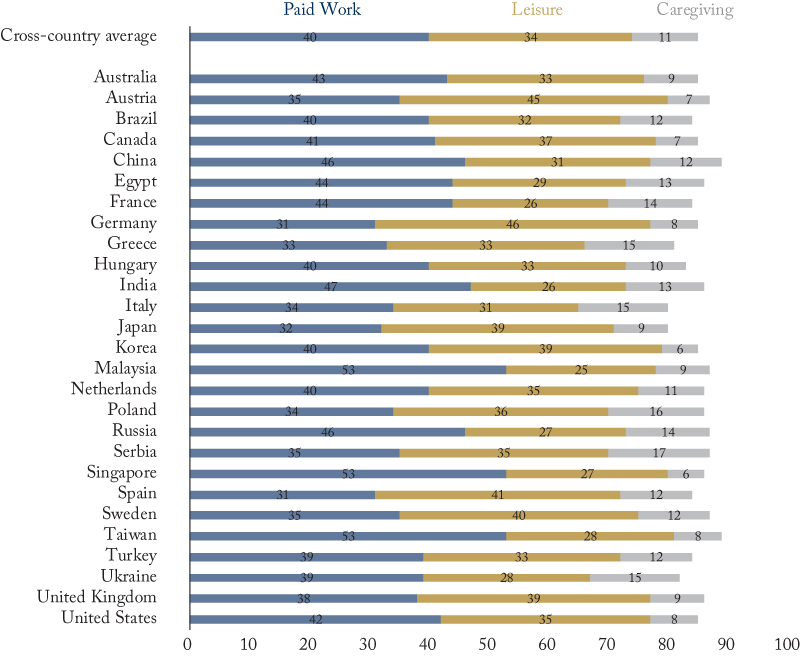Home / Publications / Intelligence Memos / Aksoy, Barrero, Bloom, Davis, Dolls, Zarate – How Remote-Working Canadians Use Commute Time Savings
- Intelligence Memos
- |
Aksoy, Barrero, Bloom, Davis, Dolls, Zarate – How Remote-Working Canadians Use Commute Time Savings
Summary:
| Citation | . 2023. "Aksoy, Barrero, Bloom, Davis, Dolls, Zarate – How Remote-Working Canadians Use Commute Time Savings." Intelligence Memos. Toronto: C.D. Howe Institute. |
| Page Title: | Aksoy, Barrero, Bloom, Davis, Dolls, Zarate – How Remote-Working Canadians Use Commute Time Savings – C.D. Howe Institute |
| Article Title: | Aksoy, Barrero, Bloom, Davis, Dolls, Zarate – How Remote-Working Canadians Use Commute Time Savings |
| URL: | https://cdhowe.org/publication/aksoy-barrero-bloom-davis-dolls-zarate-how-remote-working-canadians-use-commute/ |
| Published Date: | February 1, 2023 |
| Accessed Date: | October 28, 2025 |
Outline
Outline
Related Topics
From: Cevat Giray Aksoy, Jose Maria Barrero, Nicholas Bloom, Steven J. Davis, Mathias Dolls, and Pablo Zarate
To: Canadian Commuters
Date: February 1, 2023
Re: How Remote-Working Canadians Use Commute Time Savings
COVID-19 brought a large, lasting shift to work from home. Clearly, this shift reduces the amount of time that workers spend commuting. But how much time do people actually save when they work from home? And how do workers allocate their time savings?
The average Canadian commuter saves more than one hour (65 minutes) in commute time each day they work from home. They devote about 40 percent of the time savings to their jobs. The rest goes to leisure, caregiving activities, and household chores.
To get to this answer, we tap our Global Survey of Working Arrangements of workers aged 20 to 59, which have samples skewed to better-educated persons. Thus far, we have fielded the survey across 27 countries in two waves, one in the summer of 2021 and one 12 months ago.
In our recent National Bureau of Economic Research paper, we measured time savings from working at home by first asking about pre-COVID-19 one-way commute times.
Our question in the second survey wave was “How long do you usually spend commuting to and from work (in minutes). If you are not currently commuting to work, please answer based on your commute time in 2019 (before COVID).”
Importantly, we also asked how people allocated their time savings.
We then calculated the percentages of time savings devoted to jobs, leisure (entertaining, recreational sports, etc.) and caregiving activities. Multiplying these percentages by total daily time savings when working from home yields the extra minutes allocated to each activity.
Last winter, both men and women worked about 1.7 full days at home, on average. Since then, return-to-the-office plans circulated by employers imply that there will be about half as many remote working home days after the pandemic ends.
Putting the pieces together, our data say that work from home saved about two hours per week per worker in 2021 and 2022, and that it will save a little more than one hour per week per worker after the pandemic ends. That is equivalent to 2.2 percent of a 46-hour workweek, the sum of 40 paid hours and six hours of commuting. The time savings will tend to be smaller in countries with shorter commutes and in countries with a smaller share of highly educated workers (because less-educated workers work from home less.)
On average, 40 percent of commute time savings go to extra work on primary and secondary jobs. Canadians devote more of their saved time to work than Europeans but less than those in Asian countries.
Internationally, on average, another 34 percent goes to leisure, and 11 percent goes to caregiving activities. These results are broadly similar to previous findings for the US and for Australia. Canada skews slightly higher than these countries on saved time spent on leisure but slightly less on saved time spent on caregiving.
Internationally, the share of saved time allocated to jobs, leisure, and caregiving varies with demographics.
Some interesting patterns emerge. Living with children under 14 has large effects. Women with children devote an extra 11 minutes of their daily time savings to caregiving activities, relative to women without children. For men, the corresponding figure is nine minutes.
Work from home and the associated drop in commuting also affect individuals and society through many other channels. Some argue it expands personal freedom, improves quality of life, brings new employment opportunities, and builds social capital in residential communities. More work from home also means lighter loads on transport systems and, in particular, less congestion at peak travel times. The available evidence suggests that work from home reduces economy-wide energy consumption and pollution. The ability to work remotely improves economic and social resilience during pandemics and other disasters that inhibit travel and in-person work.
The big shift to work from home brings challenges, too. For instance, cities must contend with a drop in public transit ridership, less spending by commuters, declines in commercial property values and, in some cases, a loss of residents.
Cevat Giray Aksoy is senior research economist at the European Bank for Reconstruction and Development in London, Jose Maria Barrero is assistant professor of finance at Instituto Tecnológico Autónomo de México, Nicholas Bloom is professor of economics at Stanford University, Steven J. Davis is William H. Abbott Distinguished Service Professor of international business and economics at the University of Chicago, Mathias Dolls is deputy director, ifo institute at the University of Munich, and Pablo Zarate is an economics PhD student at Princeton University.
To send a comment or leave feedback, click here.
The views expressed here are those of the authors. The C.D. Howe Institute does not take corporate positions on policy matters.

Related Publications
- Intelligence Memos